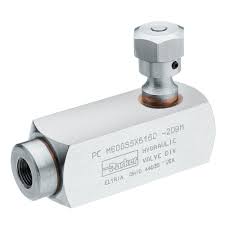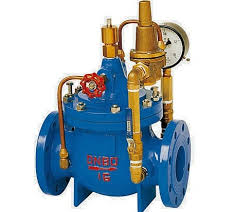What is difference between pressure control valve and flow control valve

The Application of pressure control valve and flow control valve
Cameron, a renowned manufacturer of flow and pressure control solutions, offers a range of pressure control valves and flow control valves designed to meet the diverse needs of various industries. The key difference between flow control valve and pressure control valve lies in their primary function – while flow control valves regulate the volumetric rate of fluid flow, pressure control valves are responsible for maintaining a specific pressure within a system. The selection between these valve types often depends on the specific application requirements, such as the need for precise flow management or strict pressure maintenance. Cameron’s extensive product portfolio provides customers with reliable, high-performance options to optimize their fluid control systems.
what is a sluice
modulating valve
What Are The Types Of pressure control valve and flow control valve?
Types of Pressure Control Valves:
- Pressure Reducing Valves: These valves automatically reduce and maintain a lower downstream pressure, regardless of changes in upstream pressure.
- Pressure Relief Valves: These valves open to release excess pressure when the system pressure exceeds a pre-set limit, protecting the equipment from damage.
- Backpressure Valves: These valves maintain a minimum upstream pressure by throttling the flow as necessary, often used in processes requiring a certain pressure level.
- Differential Pressure Valves: These valves regulate the pressure difference between two points in a system, ensuring a consistent pressure drop across a component.
Types of Flow Control Valves:
- Globe Valves: These valves use a linear motion to throttle the flow by varying the size of the flow orifice.
- Ball Valves: These valves use a rotary ball mechanism to precisely control the flow rate with a simple quarter-turn operation.
- Butterfly Valves: These valves regulate flow by rotating a disc-shaped obstruction into the flow path, offering good flow control capabilities.
- Diaphragm Valves: These valves use a flexible diaphragm to restrict or allow flow, often used for handling corrosive or viscous fluids.
What Is pressure control valve and flow control valve?
Pressure control valves are devices that regulate and maintain a specific pressure within a fluid system, ensuring that the pressure remains stable despite changes in demand or upstream conditions. These valves play a critical role in protecting equipment, managing process requirements, and optimizing system performance. On the other hand, flow control valves are used to manage and modulate the volumetric rate of fluid flow, allowing for precise control over the amount of material being transported through the system. The selection between pressure control valves and flow control valves depends on the specific needs of the application, as each type of valve serves a distinct purpose in managing the dynamics of fluid systems. Cameron, a leading manufacturer, offers a wide range of both pressure and flow control valve solutions to meet the diverse requirements of various industries.
How to Select the Right pressure control valve and flow control valve?
When selecting the appropriate pressure control valve or flow control valve for an application, several key factors must be considered. For pressure control valves, parameters such as the required pressure range, flow capacity, and response time are crucial. The valve material and end connections must also be compatible with the system’s operating conditions and media. In the case of flow control valves, factors like the required flow rate, pressure drop, and rangeability should guide the selection process. Additionally, the valve’s size, actuation method, and compatibility with the piping system are important considerations. Careful evaluation of these criteria, coupled with a thorough understanding of the application’s needs, will ensure the selection of the most suitable valve solution from Cameron’s comprehensive product portfolio.

Features of pressure control valve and flow control valve
Pressure Range: Pressure control valves are available with a wide range of pressure ratings to accommodate different system requirements, from low-pressure domestic applications to high-pressure industrial processes.
Flow Capacity: The flow capacity of pressure control valves is a critical consideration, as it determines the maximum flow rate that can be handled while maintaining the desired pressure.
Response Time: Pressure control valves with fast response times are essential in applications where rapid pressure adjustments are required, such as in compressor systems or high-speed processes.
Material Compatibility: The choice of valve materials is crucial to ensure compatibility with the fluid media, operating temperatures, and corrosive environments encountered in the system.
Accuracy: Flow control valves are designed to provide precise flow regulation, enabling tight control of the volumetric rate for optimal process efficiency and product quality.
Rangeability: The rangeability of a flow control valve, which is the ratio of the maximum to minimum controllable flow rates, is an essential factor in selecting the right valve for the application.
Actuation: Flow control valves can be manually operated or equipped with automated actuators, such as electric or pneumatic, to enable remote operation and process integration.
The Specifications of pressure control valve and flow control valve
Pressure Control Valve:
| Specification | Value |
|---|---|
| Type | Pressure Reducing Valve |
| Ball Material | Stainless Steel |
| Attachment Type | Threaded |
| Thread Standard | NPT |
| Thread Size | 1/2 inch |
| Body Material | Brass |
| Safe for Use With | Water, Air, Fuel Oil |
| Handle Type | Knob |
| Handle Material | Plastic |
| Maximum Working Pressure (psi) | 150 |
| Maximum Working Pressure (bar) | 10.3 |
| Operating Pressure | 20-100 psi (1.4-6.9 bar) |
Flow Control Valve:
| Specification | Value |
|---|---|
| Type | Ball Valve |
| Ball Material | Chrome-Plated Brass |
| Attachment Type | Threaded |
| Thread Standard | NPT |
| Thread Size | 3/4 inch |
| Body Material | Brass |
| Safe for Use With | Water, Air, Fuel Oil |
| Handle Type | Lever |
| Handle Material | Steel |
| Maximum Working Pressure (psi) | 600 |
| Maximum Working Pressure (bar) | 41.4 |
| Operating Pressure | 0-600 psi (0-41.4 bar) |

